You are using an out of date browser. It may not display this or other websites correctly.
You should upgrade or use an alternative browser.
You should upgrade or use an alternative browser.
What is Quantum basics: Definition and 83 Discussions
Quantum mechanics is the study of very small things. It explains the behavior of matter and its interactions with energy on the scale of atomic and subatomic particles. By contrast, classical physics explains matter and energy only on a scale familiar to human experience, including the behavior of astronomical bodies such as the Moon. Classical physics is still used in much of modern science and technology. However, towards the end of the 19th century, scientists discovered phenomena in both the large (macro) and the small (micro) worlds that classical physics could not explain. The desire to resolve inconsistencies between observed phenomena and classical theory led to two major revolutions in physics that created a shift in the original scientific paradigm: the theory of relativity and the development of quantum mechanics. This article describes how physicists discovered the limitations of classical physics and developed the main concepts of the quantum theory that replaced it in the early decades of the 20th century. It describes these concepts in roughly the order in which they were first discovered. For a more complete history of the subject, see History of quantum mechanics.
Light behaves in some aspects like particles and in other aspects like waves. Matter—the "stuff" of the universe consisting of particles such as electrons and atoms—exhibits wavelike behavior too. Some light sources, such as neon lights, give off only certain specific frequencies of light, a small set of distinct pure colors determined by neon's atomic structure. Quantum mechanics shows that light, along with all other forms of electromagnetic radiation, comes in discrete units, called photons, and predicts its spectral energies (corresponding to pure colors), and the intensities of its light beams. A single photon is a quantum, or smallest observable particle, of the electromagnetic field. A partial photon is never experimentally observed. More broadly, quantum mechanics shows that many properties of objects, such as position, speed, and angular momentum, that appeared continuous in the zoomed-out view of classical mechanics, turn out to be (in the very tiny, zoomed-in scale of quantum mechanics) quantized. Such properties of elementary particles are required to take on one of a set of small, discrete allowable values, and since the gap between these values is also small, the discontinuities are only apparent at very tiny (atomic) scales.
Many aspects of quantum mechanics are counterintuitive and can seem paradoxical because they describe behavior quite different from that seen at larger scales. In the words of quantum physicist Richard Feynman, quantum mechanics deals with "nature as She is—absurd".For example, the uncertainty principle of quantum mechanics means that the more closely one pins down one measurement (such as the position of a particle), the less accurate another complementary measurement pertaining to the same particle (such as its speed) must become.
Another example is entanglement, in which a measurement of any two-valued state of a particle (such as light polarized up or down) made on either of two "entangled" particles that are very far apart causes a subsequent measurement on the other particle to always be the other of the two values (such as polarized in the opposite direction).
A final example is superfluidity, in which a container of liquid helium, cooled down to near absolute zero in temperature spontaneously flows (slowly) up and over the opening of its container, against the force of gravity.
View More On Wikipedia.org
Light behaves in some aspects like particles and in other aspects like waves. Matter—the "stuff" of the universe consisting of particles such as electrons and atoms—exhibits wavelike behavior too. Some light sources, such as neon lights, give off only certain specific frequencies of light, a small set of distinct pure colors determined by neon's atomic structure. Quantum mechanics shows that light, along with all other forms of electromagnetic radiation, comes in discrete units, called photons, and predicts its spectral energies (corresponding to pure colors), and the intensities of its light beams. A single photon is a quantum, or smallest observable particle, of the electromagnetic field. A partial photon is never experimentally observed. More broadly, quantum mechanics shows that many properties of objects, such as position, speed, and angular momentum, that appeared continuous in the zoomed-out view of classical mechanics, turn out to be (in the very tiny, zoomed-in scale of quantum mechanics) quantized. Such properties of elementary particles are required to take on one of a set of small, discrete allowable values, and since the gap between these values is also small, the discontinuities are only apparent at very tiny (atomic) scales.
Many aspects of quantum mechanics are counterintuitive and can seem paradoxical because they describe behavior quite different from that seen at larger scales. In the words of quantum physicist Richard Feynman, quantum mechanics deals with "nature as She is—absurd".For example, the uncertainty principle of quantum mechanics means that the more closely one pins down one measurement (such as the position of a particle), the less accurate another complementary measurement pertaining to the same particle (such as its speed) must become.
Another example is entanglement, in which a measurement of any two-valued state of a particle (such as light polarized up or down) made on either of two "entangled" particles that are very far apart causes a subsequent measurement on the other particle to always be the other of the two values (such as polarized in the opposite direction).
A final example is superfluidity, in which a container of liquid helium, cooled down to near absolute zero in temperature spontaneously flows (slowly) up and over the opening of its container, against the force of gravity.
View More On Wikipedia.org
-

I Is my interpretation of the g-factor correct?
I'm trying to make sure I understand the g-factor of the electron, so if my question is flawed please don't just point out my flaws, but help me correct my understanding If I understand correctly the magnetic moment of an object depends on it charge, its mass and its momentum $$ \mu =...- Frigorifico9
- Thread
- Replies: 4
- Forum: Quantum Physics
-

I Who was the first to make a Stern-Gerlach experiment with two magnets?
I'm trying to fill a conceptual gap I have in the history of physics In 1922 Stern and Gerlach make their experiment, proving that electrons have intrinsic angular momentum, however it takes a while for people to understand this. At first they think this is somehow caused by quantization of...- Frigorifico9
- Thread
- Replies: 9
- Forum: Quantum Physics
-
I What Is Bell's Theorem and Why Does It Matter?
Hi everyone, I need some help getting the gist of Bell’s theorem and his notion of inequalities. How would you explain it to someone with limited knowledge of mathematics? What are the potential implications?- golya
- Thread
- Replies: 3
- Forum: Quantum Physics
-

B Extremely elementary questions about QM
Im trying to learn QM on my own and I just want to clear some things up. I feel dumb writing some out but Id rather clear my confusion than believe im interpreting what I read correctly. From what I've read, every measurement of a system gives us values that are the eigenvalues of a certain...- okaythanksbud
- Thread
- Replies: 24
- Forum: Quantum Physics
-
Y
Quantum Theory, particle in a ring
hello i would to get some help with my homework. 1. true 2. i dont know 3. true 4. i dont know 5, false 6. i dont know about 2,4,6 i really have know idea what to think I really appreciate help- yesmale4
- Thread
- Replies: 1
- Forum: Introductory Physics Homework Help
-
S
What aspects of quantum theory are you curious about?
As per my name, I am Quantum Newbie. I am I am exactly that. I'm interested more specifically in the following: mandella effect, butterfly effect, alternate universes, mirror worlds, bubble worlds, quantum mortality, crossovers, multiple paths on the same frequency, dementions, universe A and...- shaundarel
- Thread
- Replies: 4
- Forum: New Member Introductions
-

I What is the significance of the T - V Lagrangian of a system?
Let E be a fixed immutable quantity. E can be freely exchanged between T and V, as long as $$T + V = E$$ 1. What does the quantity $$\int_x T - V $$ signify? What is the importance of this quantity? -------------------- Let E now be the budget of a factory. E can either be spent on T or V in...- James1238765
- Thread
- Replies: 30
- Forum: Classical Physics
-

B What is a non-local Hamiltonian?
If I understand it correctly, the Hamiltonian represents the total energy of the system. Can it be non-local? If yes, doesn't this contradict relativistic locality?- lindberg
- Thread
- Replies: 20
- Forum: Quantum Physics
-
D
Diagonalizing of Hamiltonian of electron and positron system
What I did was first noting that ##\hat{\vec{S}}_1\cdot\hat{\vec{S}}_2=\frac{1}{2}(\hat{\vec{S}}^2-\hat{\vec{S}}_1^2-\hat{\vec{S}}_2^2)##, but these operators don't commute with ##\hat{S}_{1_z}## and ##\hat{S}_{2_z}##, this non the decoupled basis ##\ket{s_1,s_2;m_1,m_2}## nor the coupled one...- Davidllerenav
- Thread
- Replies: 1
- Forum: Advanced Physics Homework Help
-
C
I Quantization of Quasiperiodic Orbits in the Bohr-Sommerfeld Model
Recall that in the semi-classical Bohr-Sommerfeld quantization scheme from the early days of quantum mechanics, bound orbits were quantized according to the value of the action integral around a single loop of a closed path. Clearly this only makes sense if the orbits in question permit closed...- Couchyam
- Thread
- Replies: 5
- Forum: Quantum Physics
-

Explain the Schrodinger equation
Please explain in simple words, the meaning of the Schrodinger wave equation in the quantum mechanics model of atom. $$\frac{\partial^{2} \psi}{\partial x^{2}}+\frac{\partial^{2} \psi}{\partial y^{2}}+\frac{\partial^{2} \psi}{\partial z^{2}}+\frac{8 \pi^{2} m}{h^{2}}(E-U) \psi=0$$- Huzaifa
- Thread
- Replies: 3
- Forum: Introductory Physics Homework Help
-
Z
I Pauli spin matrices under inversion and 180 degree rotation?
How do the Pauli spin matrices transform under an inversion ? I think I mean to say the 3 dimensional improper rotation which is just in 3 dimensional matrix notation minus the identity - so exactly how are the 2 dimensional Pauli spin matrices changed. And under a 180 rotation do the 'y' and...- zmth
- Thread
- Replies: 5
- Forum: Quantum Physics
-
S
A Definition of bi-local measurement by Masanes et al.
Dear experts, I'm currently working my way through the paper Masanes, Galley, Müller, https://arxiv.org/abs/1811.11060. On page 3, they define what they call a bi-local measurement: If we have two systems a and b and we define an outcome probability function for some measurement f on system a...- Sonderval
- Thread
- Replies: 2
- Forum: Quantum Physics
-
Q
Is Quantum Entanglement the Key to Instantaneous Communication?
Hey all! I'm Alexander, after all of the exposure quantum physics is getting in these Marvel movies I decided to study up and I must say Quantum Physics just doesn't set well with me. I'm very interested in what has been made capable due to the math involved with quantum physics. I have a large...- Quantum_is_Broken
- Thread
- Replies: 15
- Forum: Feedback and Announcements
-

Find the normalization constant ##A##
Homework Statement Find the noralization constant ##A## of the function bellow: $$ \psi(x) = A e^\left(i k x -x^2 \right) \left[ 1 + e^\left(-i \alpha \right) \right], $$ ##\alpha## is also a constant. Homework Equations ##\int_{-\infty}^{\infty} e^\left(-\lambda x^2 \right) \, dx = \sqrt...- Mutatis
- Thread
- Replies: 14
- Forum: Advanced Physics Homework Help
-
P
I Why is the Phase Shift in Grover's Algorithm Applied to All Elements Except 0?
Hi everybody, I've read some pages in Nielsens "Quantum Computing" book, it's very interesting, but especially at Grover's algorithm, there occurs a question for me. It is said that a phase shift is performed, which is defined as follows: ##|0\rangle \rightarrow |0\rangle \\ |x\rangle...- Peter_Newman
- Thread
- Replies: 4
- Forum: Quantum Physics
-
L
Help with finding the expectation value of x^2
The question is as follows: A particle of mass m has the wave function psi(x, t) = A * e^( -a ( ( m*x^2 / hbar) +i*t ) ) where A and a are positive real constants. i don't know how to format my stuff on this website, so it may be a bit harder to read. Generally when i write "int" i mean the...- Lasse Jepsen
- Thread
- Replies: 7
- Forum: Advanced Physics Homework Help
-
D
B The Nature of Measurement and Interaction in Quantum Mechanics
I am still confused about the difference between measurement and interaction. I mean when electrons are traveling from source to the screen through the slits, there are air molecules in their way. And even if the electron double slit experiment is carried out in total vacuum in a completely...- djsourabh
- Thread
- Replies: 7
- Forum: Quantum Physics
-
J
B Is wave-particle duality a result of the relativity theory?
Have thought about this for sometime but couldn't get deeper. I have speculated that wave-particle duality is a direct result of the relativity theory. Especially it could arise from the factor of length contraction (dimensionality reduction). So far, the particle reality is based on various...- Jianping Zhang
- Thread
- Replies: 8
- Forum: Quantum Physics
-

Harmonic Oscillator violating Heisenberg's Uncertainity
Homework Statement Does the n = 2 state of a quantum harmonic oscillator violate the Heisenberg Uncertainty Principle? Homework Equations $$\sigma_x\sigma_p = \frac{\hbar}{2}$$ The Attempt at a Solution [/B] I worked out the solution for the second state of the harmonic oscillator...- Safder Aree
- Thread
- Replies: 8
- Forum: Introductory Physics Homework Help
-

Write the matrix representation of the raising operators....
Homework Statement Hi, guys. The question is: For a 3-state system, |0⟩, |1⟩ and |2⟩, write the matrix representation of the raising operators ## \hat A, \hat A^\dagger ##, ## \hat x ## and ##\hat p ##. Homework Equations I know how to use all the above operators projecting them on...- Mutatis
- Thread
- Replies: 6
- Forum: Introductory Physics Homework Help
-
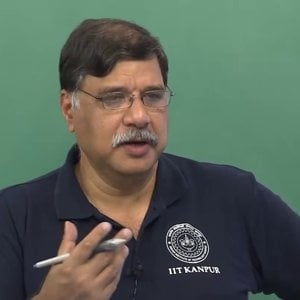
Introductory Quantum Mechanics with Prof. Manoj Harbola (NPTEL):- Lecture 1: Black Body Radiation I
All copyright reserved to Prof. Harbola and NPTEL, Govt. of India. Duplication punishable offence. Course Website: http://www.nptel.ac.in/courses/115104096/- Wrichik Basu
- Media item
- black body radiation quantum basics schrodinger equation
- Comments: 0
- Category: Quantum
-
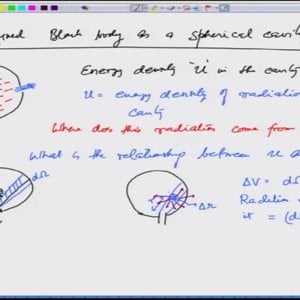
Introductory Quantum Mechanics with Prof. Manoj Harbola (NPTEL):- Lecture 2: Black Body Radiation II
All copyright reserved to Prof. Harbola and NPTEL, Govt. of India. Duplication punishable offence. Course Website: http://www.nptel.ac.in/courses/115104096/- Wrichik Basu
- Media item
- black body radiation quantum basics schrodinger equation
- Comments: 0
- Category: Quantum
-
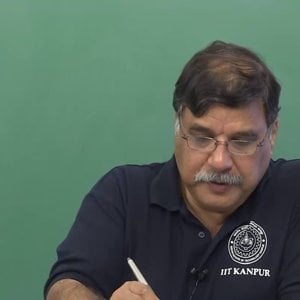
Introductory Quantum Mechanics with Prof. Manoj Harbola (NPTEL):- Lecture 3: Black Body Radiation III
All copyright reserved to Prof. Harbola and NPTEL, Govt. of India. Duplication punishable offence. Course Website: http://www.nptel.ac.in/courses/115104096/- Wrichik Basu
- Media item
- black body radiation quantum basics schrodinger equation
- Comments: 0
- Category: Quantum
-
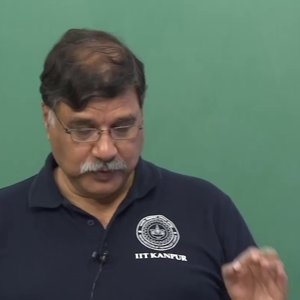
Introductory Quantum Mechanics with Prof. Manoj Harbola (NPTEL):- Lecture 6: Black Body Radiation VI
All copyright reserved to Prof. Harbola and NPTEL, Govt. of India. Duplication punishable offence. Course Website: http://www.nptel.ac.in/courses/115104096/- Wrichik Basu
- Media item
- black body radiation quantum basics schrodinger equation
- Comments: 0
- Category: Quantum
-
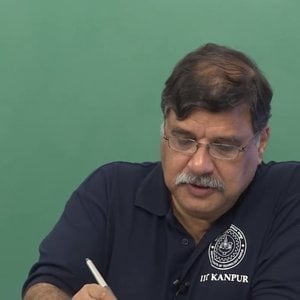
Introductory Quantum Mechanics with Prof. Manoj Harbola (NPTEL):- Lecture 7: Black Body Radiation VII
All copyright reserved to Prof. Harbola and NPTEL, Govt. of India. Duplication punishable offence. Course Website: http://www.nptel.ac.in/courses/115104096/- Wrichik Basu
- Media item
- black body radiation quantum basics schrodinger equation
- Comments: 0
- Category: Quantum
-
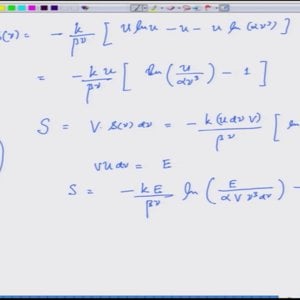
Introductory Quantum Mechanics with Prof. Manoj Harbola (NPTEL):- Lecture 8: Radiation as a collection of particles called photons
All copyright reserved to Prof. Harbola and NPTEL, Govt. of India. Duplication punishable offence. Course Website: http://www.nptel.ac.in/courses/115104096/- Wrichik Basu
- Media item
- black body radiation quantum basics schrodinger equation
- Comments: 0
- Category: Quantum
-
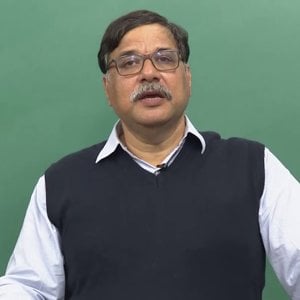
Introductory Quantum Mechanics with Prof. Manoj Harbola (NPTEL):- Lecture 9: Quantum Hypothesis and specific heat of solids
All copyright reserved to Prof. Harbola and NPTEL, Govt. of India. Duplication punishable offence. Course Website: http://www.nptel.ac.in/courses/115104096/- Wrichik Basu
- Media item
- black body radiation quantum basics schrodinger equation
- Comments: 0
- Category: Quantum
-
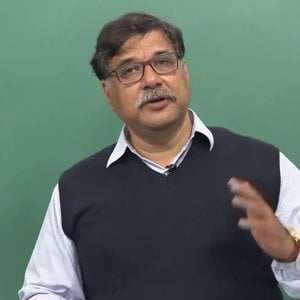
Introductory Quantum Mechanics with Prof. Manoj Harbola (NPTEL):- Lecture 10: Bohr's Model of hydrogen spectrum
All copyright reserved to Prof. Harbola and NPTEL, Govt. of India. Duplication punishable offence. Course Website: http://www.nptel.ac.in/courses/115104096/- Wrichik Basu
- Media item
- black body radiation quantum basics schrodinger equation
- Comments: 0
- Category: Quantum
-
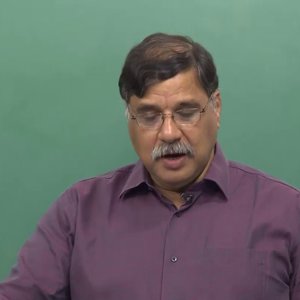
Introductory Quantum Mechanics with Prof. Manoj Harbola (NPTEL):- Lecture 11: Wilson Sommerfeld quantum condition I
All copyright reserved to Prof. Harbola and NPTEL, Govt. of India. Duplication punishable offence. Course Website: http://www.nptel.ac.in/courses/115104096/- Wrichik Basu
- Media item
- black body radiation quantum basics schrodinger equation
- Comments: 0
- Category: Quantum
-
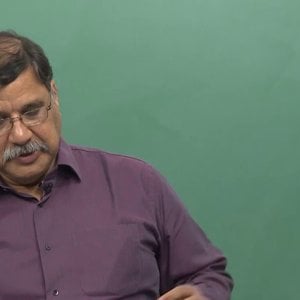
Introductory Quantum Mechanics with Prof. Manoj Harbola (NPTEL):- Lecture 12: Wilson Sommerfeld quantum condition II
All copyright reserved to Prof. Harbola and NPTEL, Govt. of India. Duplication punishable offence. Course Website: http://www.nptel.ac.in/courses/115104096/- Wrichik Basu
- Media item
- black body radiation quantum basics schrodinger equation
- Comments: 0
- Category: Quantum
-
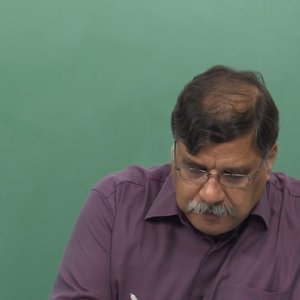
Introductory Quantum Mechanics with Prof. Manoj Harbola (NPTEL):- Lecture 13: Wilson Sommerfeld quantum condition III
All copyright reserved to Prof. Harbola and NPTEL, Govt. of India. Duplication punishable offence. Course Website: http://www.nptel.ac.in/courses/115104096/- Wrichik Basu
- Media item
- black body radiation quantum basics schrodinger equation
- Comments: 0
- Category: Quantum
-
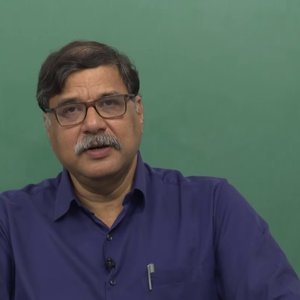
Introductory Quantum Mechanics with Prof. Manoj Harbola (NPTEL):- Lecture 14: Quantum conditions and atomic structure
All copyright reserved to Prof. Harbola and NPTEL, Govt. of India. Duplication punishable offence. Course Website: http://www.nptel.ac.in/courses/115104096/- Wrichik Basu
- Media item
- black body radiation quantum basics schrodinger equation
- Comments: 0
- Category: Quantum
-

Introductory Quantum Mechanics with Prof. Manoj Harbola (NPTEL):- Lecture 15: Eienstien's A and B coefficients
All copyright reserved to Prof. Harbola and NPTEL, Govt. of India. Duplication punishable offence. Course Website: http://www.nptel.ac.in/courses/115104096/- Wrichik Basu
- Media item
- black body radiation quantum basics schrodinger equation
- Comments: 0
- Category: Quantum
-
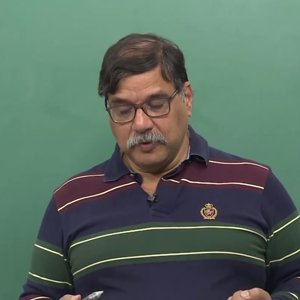
Introductory Quantum Mechanics with Prof. Manoj Harbola (NPTEL):- Lecture 16: Stimulated emission and amplification of light in a LASER
All copyright reserved to Prof. Harbola and NPTEL, Govt. of India. Duplication punishable offence. Course Website: http://www.nptel.ac.in/courses/115104096/- Wrichik Basu
- Media item
- black body radiation quantum basics schrodinger equation
- Comments: 0
- Category: Quantum
-
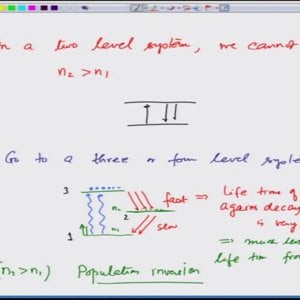
Introductory Quantum Mechanics with Prof. Manoj Harbola (NPTEL):- Lecture 17: Brief description of a LASER
All copyright reserved to Prof. Harbola and NPTEL, Govt. of India. Duplication punishable offence. Course Website: http://www.nptel.ac.in/courses/115104096/- Wrichik Basu
- Media item
- black body radiation quantum basics schrodinger equation
- Comments: 0
- Category: Quantum
-
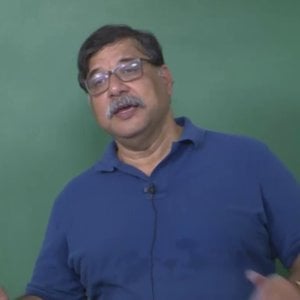
Introductory Quantum Mechanics with Prof. Manoj Harbola (NPTEL):- Lecture 18: Introduction to the correspondence principle
All copyright reserved to Prof. Harbola and NPTEL, Govt. of India. Duplication punishable offence. Course Website: http://www.nptel.ac.in/courses/115104096/- Wrichik Basu
- Media item
- black body radiation quantum basics schrodinger equation
- Comments: 0
- Category: Quantum
-
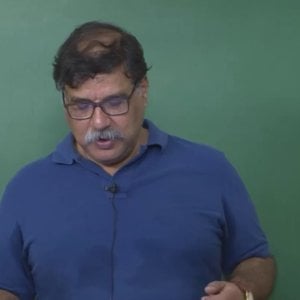
Introductory Quantum Mechanics with Prof. Manoj Harbola (NPTEL):- Lecture 19: General nature of the correspondence principle
All copyright reserved to Prof. Harbola and NPTEL, Govt. of India. Duplication punishable offence. Course Website: http://www.nptel.ac.in/courses/115104096/- Wrichik Basu
- Media item
- black body radiation quantum basics schrodinger equation
- Comments: 0
- Category: Quantum
-
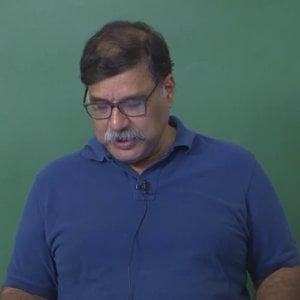
Introductory Quantum Mechanics with Prof. Manoj Harbola (NPTEL):- Lecture 20: Selection rules (for transitions) through the correspondence principle
All copyright reserved to Prof. Harbola and NPTEL, Govt. of India. Duplication punishable offence. Course Website: http://www.nptel.ac.in/courses/115104096/- Wrichik Basu
- Media item
- black body radiation quantum basics schrodinger equation
- Comments: 0
- Category: Quantum
-
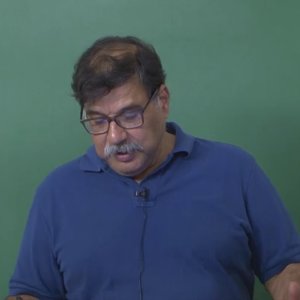
Introductory Quantum Mechanics with Prof. Manoj Harbola (NPTEL):- Lecture 21: Applications of the correspondence principle
All copyright reserved to Prof. Harbola and NPTEL, Govt. of India. Duplication punishable offence. Course Website: http://www.nptel.ac.in/courses/115104096/- Wrichik Basu
- Media item
- black body radiation quantum basics schrodinger equation
- Comments: 0
- Category: Quantum
-
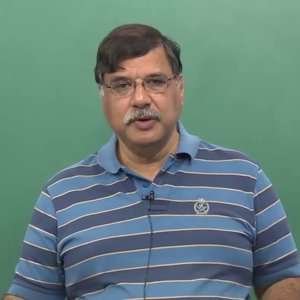
Introductory Quantum Mechanics with Prof. Manoj Harbola (NPTEL):- Lecture 22: Heisenberg's formulations of quantum mechanics I
All copyright reserved to Prof. Harbola and NPTEL, Govt. of India. Duplication punishable offence. Course Website: http://www.nptel.ac.in/courses/115104096/- Wrichik Basu
- Media item
- black body radiation quantum basics schrodinger equation
- Comments: 0
- Category: Quantum
-
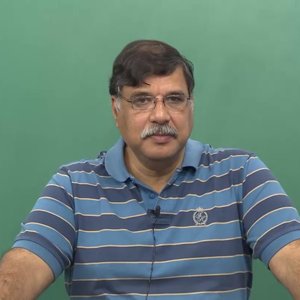
Introductory Quantum Mechanics with Prof. Manoj Harbola (NPTEL):- Lecture 23: Heisenberg's formulations of quantum mechanics II
All copyright reserved to Prof. Harbola and NPTEL, Govt. of India. Duplication punishable offence. Course Website: http://www.nptel.ac.in/courses/115104096/- Wrichik Basu
- Media item
- black body radiation quantum basics schrodinger equation
- Comments: 0
- Category: Quantum
-
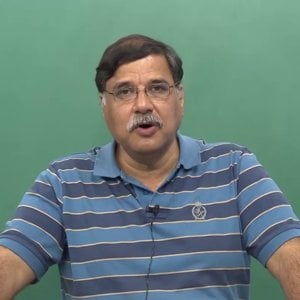
Introductory Quantum Mechanics with Prof. Manoj Harbola (NPTEL):- Lecture 24: Heisenberg's formulations of quantum mechanics III
All copyright reserved to Prof. Harbola and NPTEL, Govt. of India. Duplication punishable offence. Course Website: http://www.nptel.ac.in/courses/115104096/- Wrichik Basu
- Media item
- black body radiation quantum basics schrodinger equation
- Comments: 0
- Category: Quantum
-
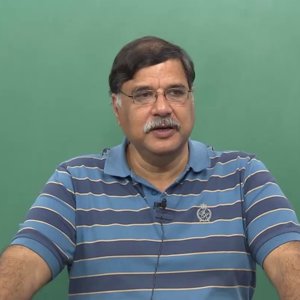
Introductory Quantum Mechanics with Prof. Manoj Harbola (NPTEL):- Lecture 25: Brief introduction to matrix mechanics
All copyright reserved to Prof. Harbola and NPTEL, Govt. of India. Duplication punishable offence. Course Website: http://www.nptel.ac.in/courses/115104096/- Wrichik Basu
- Media item
- black body radiation quantum basics schrodinger equation
- Comments: 0
- Category: Quantum
-
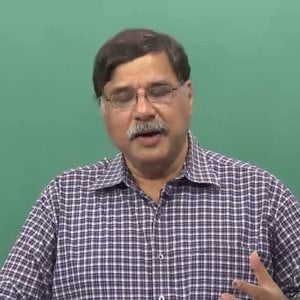
Introductory Quantum Mechanics with Prof. Manoj Harbola (NPTEL):- Lecture 26: Introduction to waves and wave equation
All copyright reserved to Prof. Harbola and NPTEL, Govt. of India. Duplication punishable offence. Course Website: http://www.nptel.ac.in/courses/115104096/- Wrichik Basu
- Media item
- black body radiation quantum basics schrodinger equation
- Comments: 0
- Category: Quantum
-
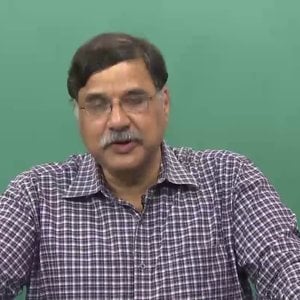
Introductory Quantum Mechanics with Prof. Manoj Harbola (NPTEL):- Lecture 27: Sationary waves eigen values and eigen functions
All copyright reserved to Prof. Harbola and NPTEL, Govt. of India. Duplication punishable offence. Course Website: http://www.nptel.ac.in/courses/115104096/- Wrichik Basu
- Media item
- black body radiation quantum basics schrodinger equation
- Comments: 0
- Category: Quantum
-
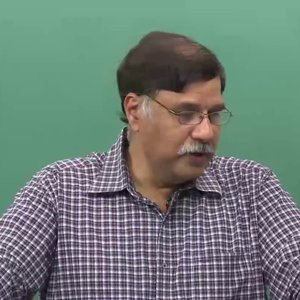
Introductory Quantum Mechanics with Prof. Manoj Harbola (NPTEL):- Lecture 28: Matter waves and their experimental detection
All copyright reserved to Prof. Harbola and NPTEL, Govt. of India. Duplication punishable offence. Course Website: http://www.nptel.ac.in/courses/115104096/- Wrichik Basu
- Media item
- black body radiation quantum basics schrodinger equation
- Comments: 0
- Category: Quantum
-
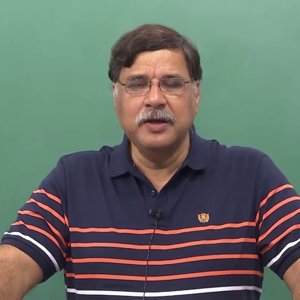
Introductory Quantum Mechanics with Prof. Manoj Harbola (NPTEL):- Lecture 29: Representing a moving particle by a wave packet
All copyright reserved to Prof. Harbola and NPTEL, Govt. of India. Duplication punishable offence. Course Website: http://www.nptel.ac.in/courses/115104096/- Wrichik Basu
- Media item
- black body radiation quantum basics schrodinger equation
- Comments: 0
- Category: Quantum
-

Introductory Quantum Mechanics with Prof. Manoj Harbola (NPTEL):- Lecture 30: Stationary-state Schrodinger equation
All copyright reserved to Prof. Harbola and NPTEL, Govt. of India. Duplication punishable offence. Course Website: http://www.nptel.ac.in/courses/115104096/- Wrichik Basu
- Media item
- black body radiation quantum basics schrodinger equation
- Comments: 0
- Category: Quantum
-
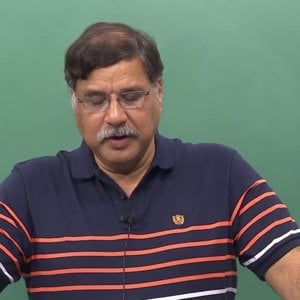
Introductory Quantum Mechanics with Prof. Manoj Harbola (NPTEL):- Lecture 31: Solution of the stationary-state Schrodinger equation for a SHO
All copyright reserved to Prof. Harbola and NPTEL, Govt. of India. Duplication punishable offence. Course Website: http://www.nptel.ac.in/courses/115104096/- Wrichik Basu
- Media item
- black body radiation quantum basics schrodinger equation
- Comments: 0
- Category: Quantum